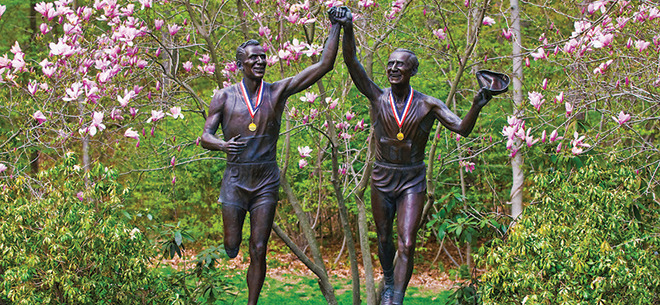
Perhaps the most well-known—not to mention infamous—landmark along the historic Boston Marathon’s 26.2-mile course is a hill in Newton that was aptly nicknamed in honor of one of the race’s more dramatic moments. Although not the highest hill in a major marathon at approximately 91 feet from base to peak, it was nevertheless the site of the downfall of a once and future champion, and continues to challenge the stamina of elite runners to this day.
The incident in question took place in 1936. Defending champion and Massachusetts native John A. Kelley—who would go on to record the most starts in Boston Marathon history (61) and ran his last race in 1992 at the age of 84—was in the lead around the 20 mile mark. He had passed rival Ellison “Tarzan” Brown in the Newton hills, giving a friendly tap on Brown’s shoulder as he did so. That gesture would come back to haunt Kelley, however, as on the last of those hills it inspired Brown to overtake Kelley. Brown eventually finished as the champion, thus, as Boston Globe reporter Jerry Nason remarked, “breaking Kelley’s heart.” Perhaps, though, Kelley got the last laugh. He went on to win in 1945, and is immortalized by the statue Young at Heart (pictured), which lies in Newton at the intersection of Commonwealth Avenue and Walnut Street. The bronze monument depicts Kelley at age 27, when he won his first Boston Marathon, and at age 84, when he ran his final race.
To this day, Heartbreak Hill remains—not so much for its height but for its position near the end of the race and the steepness of its 3.3% elevation grade over its 600-meter length—a dreaded mental and physical obstacle for every Boston Marathon runner.


